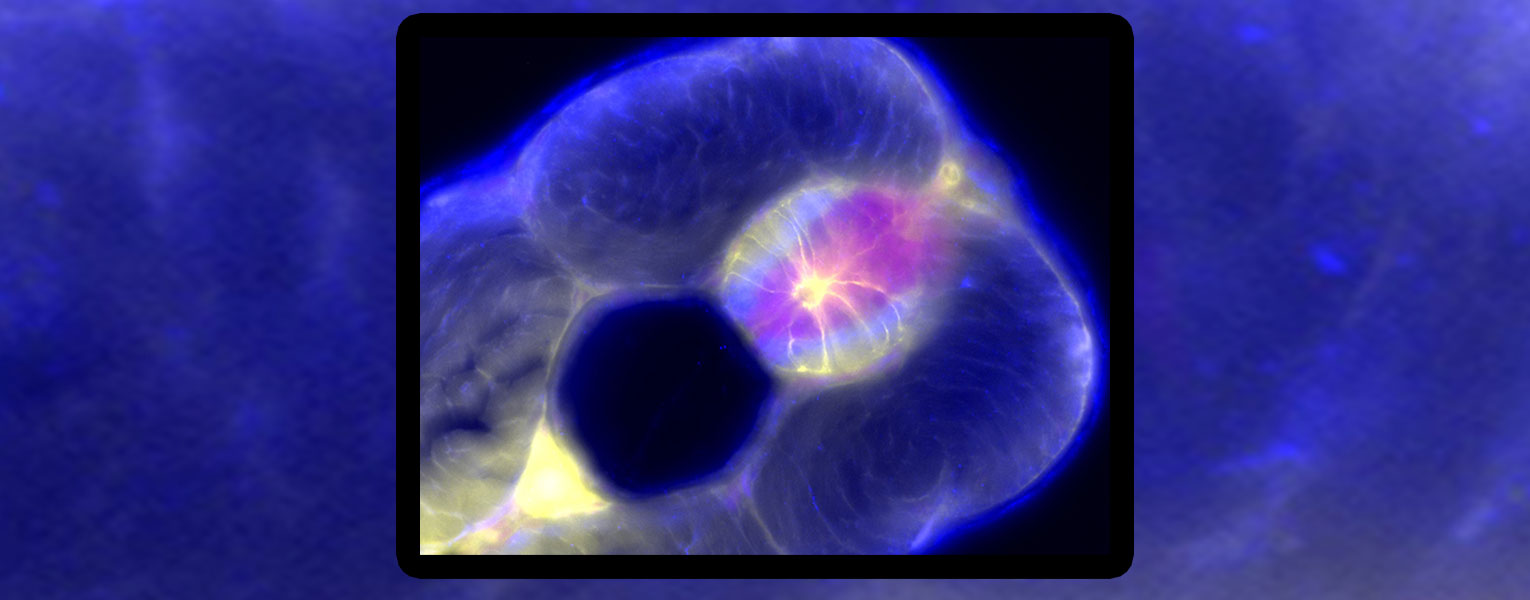1/4/2024
Art of Science: Art of Science Announces Top Winner
FAU High School Student and Undergraduate in First Place
By Bethany Augliere
Addison Manofsky is no ordinary high schooler. At only 17, she is a senior at FAU High School, a junior, pre-med student in Florida Atlantic's Harriet L. Wilkes Honors College, and a researcher studying cells in the nervous system to uncover a treatment for her own health issue, which currently has none.
The superstar teen is also the first-place winner in the 2023 Art of Science photography and video contest for her image of a zebrafish spinal cord.
“I’ve always loved art,” said Manofsky, who is also earning a minor in art and creative writing. “Not everyone has the opportunity to be in a lab and visualize these amazing things and so I think these images bring awareness — and more people — to science.”
Manofsky captured her winning image while working with her advisor Laura Fontenas, Ph.D., assistant professor in the Charles E. Schmidt College of Science. Manofsky is working with Fontenas based on their mutual interest in the development and movement throughout the nervous system of a type of brain cell called a glia, which are heavily impacted in diseases like Alzheimer’s, Parkinson’s and multiple sclerosis, among others.
Glial cells migrate from their birthplace and travel to the central nervous system (brain and spinal cord) or the nerves throughout the body, called the peripheral nervous system. In those locations, they form a protective coating, called a myelin sheath, over the nerves, which helps with their function, she said. “We’re really interested in the glial migration because for a lot of diseases you will oftentimes have issues with peripheral nervous system myelin sheath, for example, but then the central nervous system like brain and spinal cord okay, or vice versa,” she said. Identifying glial cells that could function in both the central and peripheral nervous system means scientists could use the healthy cells from one system to help the other, she added.
Manofsky said she’s always been interested in science and becoming a doctor, inspired by her mom, who is a physician. However, after experiencing her own medical issues related to losing the myelin sheath coating her nerves, she was inspired to conduct research. She’s now considering earning a doctorate in neuroscience, while pursuing her medical degree. “I’ve been told many times that there isn’t a treatment for my condition, and there’s not an answer,” she said. “That sparked my interest in wanting to go out and discover new things.”
“I was very grateful to be able to find Dr. Fontenas’s lab because it’s all about glial migration and myelin and the nervous system and I have a demyelinating disease,” she said. “I really just want answers for others.”
As for her winning photograph of a zebrafish spinal cord, Manofsky said, it’s an interesting picture, which shows different types of glial cells in the nervous system and where they are located. But, she added, the image also shows the beauty behind science. “I think the contest is a great opportunity for people to see science and research through a different lens.”
If you would like more information, please contact us at dorcommunications@fau.edu.
If You Go …
Join us for the kickoff celebration of this year’s monthlong Art of Science gallery exhibition.What: Art of Science Opening Night
When: Thursday, Jan. 25
Time: 4 to 6 p.m.
Where: Schmidt Center Gallery, Boca Raton campus
Register here.
